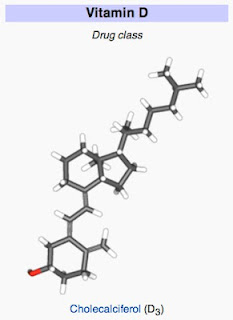Recently at the Frontier Medical Insitute, my Vitamin D levels were determined to be low, despite taking 5000 units of Vitamin D3 once or twice a day. You need more than you think.
In addition, I no longer use sun screen in order to maximize Vitamin D creation, since frequencies can eliminate basal cell carcinomas and prevent them by eliminating precursor cells. Still, my Vitamin D was low. This problem is now part of mainstream medicine as even conventional physicians treating some family members are checking Vitamin D and prescribing it as needed.
Recent papers in the Journal of Leukocyte Biology describes the mechanisms by which low Vitamin D increases risk of infection.
To perform the analysis and gather data for this study, researchers compared the changes in the blood levels of vitamin D among three groups of healthy subjects: youth (aged 20 to 30), middle-aged (aged 31 to 59), and elderly (aged 60 to 86). The scientists found decreased levels of vitamin D with aging, likely due to decreased exposure to the sun and a decline in the native ability of skin receptors to produce precursor levels of vitamin D, commonly found among individuals above the age of 40.
The research team found that the level of circulating vitamin D in the blood affected the toll-like receptor (TLR) expression measured on white blood cell lymphocytes and monocytes. Specifically, they found that the TRL most affected by a vitamin D insufficiency is TLR7, which regulates the immune response against viruses. In many geographic regions, limited sun exposure during darker winter months is closely associated with vitamin D deficiency and increased risk for colds and influenza outbreaks.
The lead study author, Dr. John Wherry concluded“This study shows that sunlight, or more precisely the lack of vitamin D could have a role in the seasonally higher rates of infection… since vitamin D supplements are inexpensive and generally safe, this is a really exciting discovery.”It is best not to rely on sun exposure or dietary sources to obtain vitamin D. Most health-minded adults will want to supplement with an oil-based form of Vitamin D3 (experts recommend starting with 5000 IU per day), and test twice a year using the 25(OH)D blood test to confirm optimal levels above 50 ng/mL to achieve optimal protection against colds, flu, and many viral infection strains.
Learn more:http://www.naturalnews.com/036168_vitamin_D_flu_infections.html#ixzz1xkZqnioP
